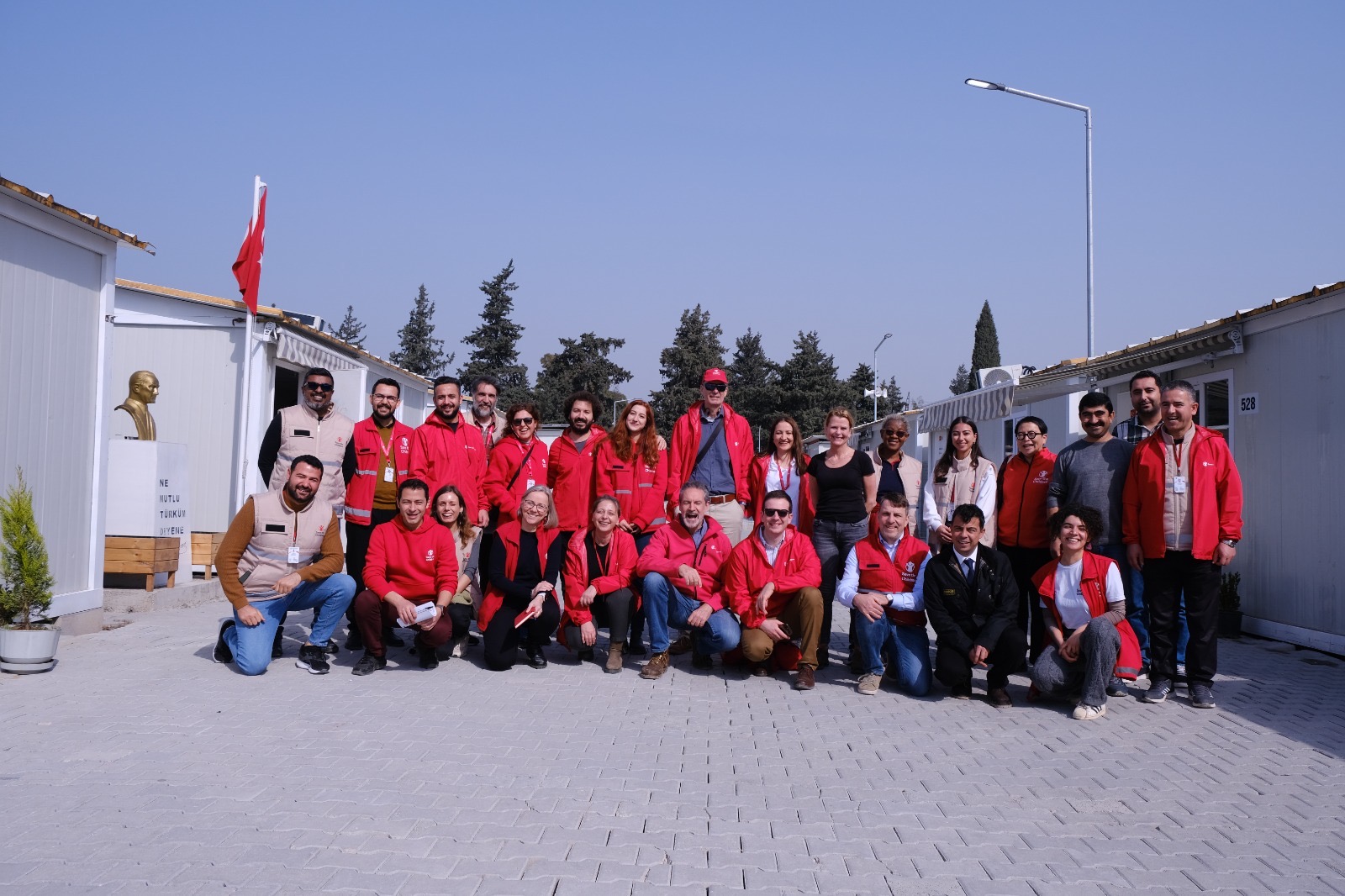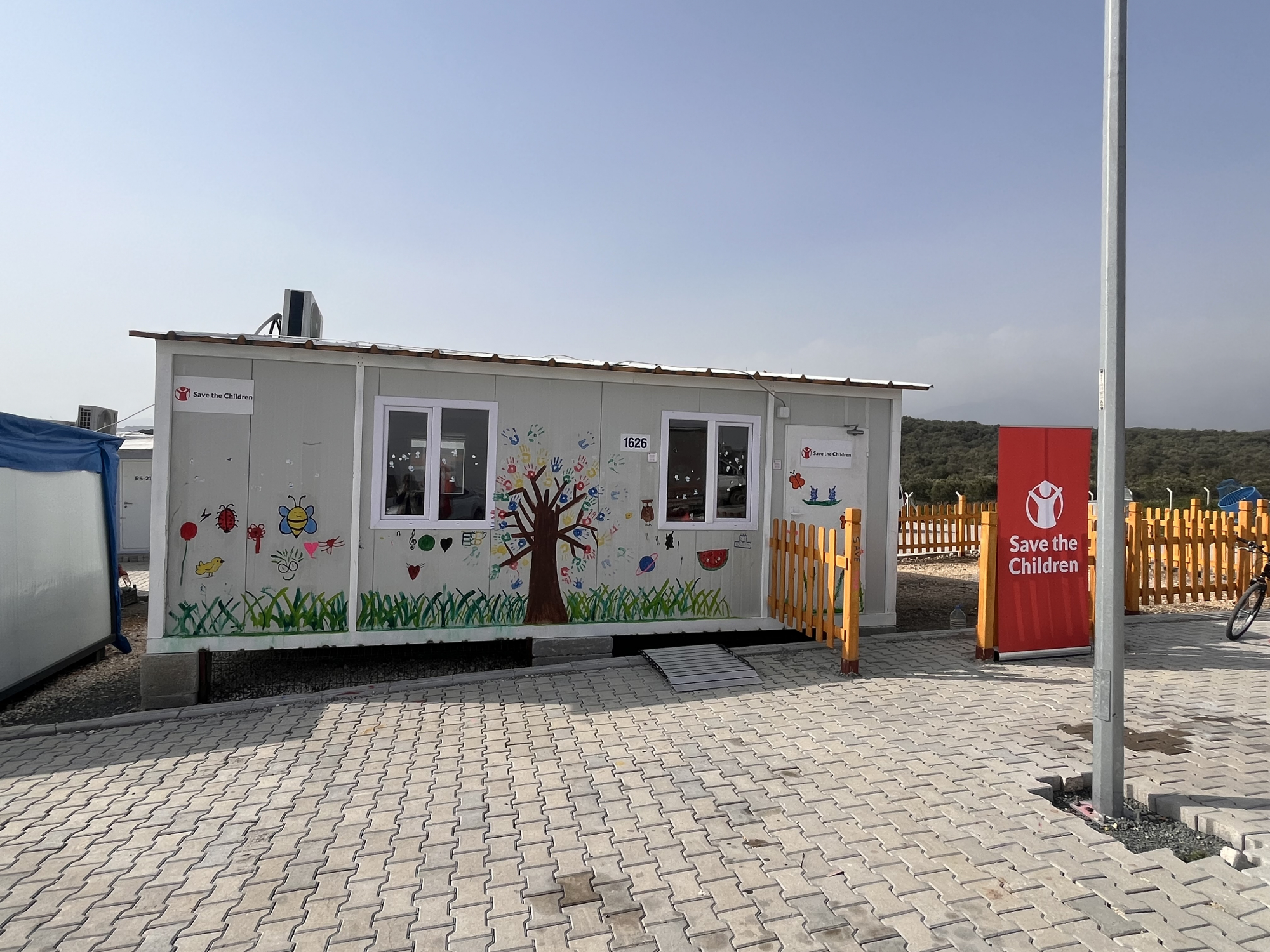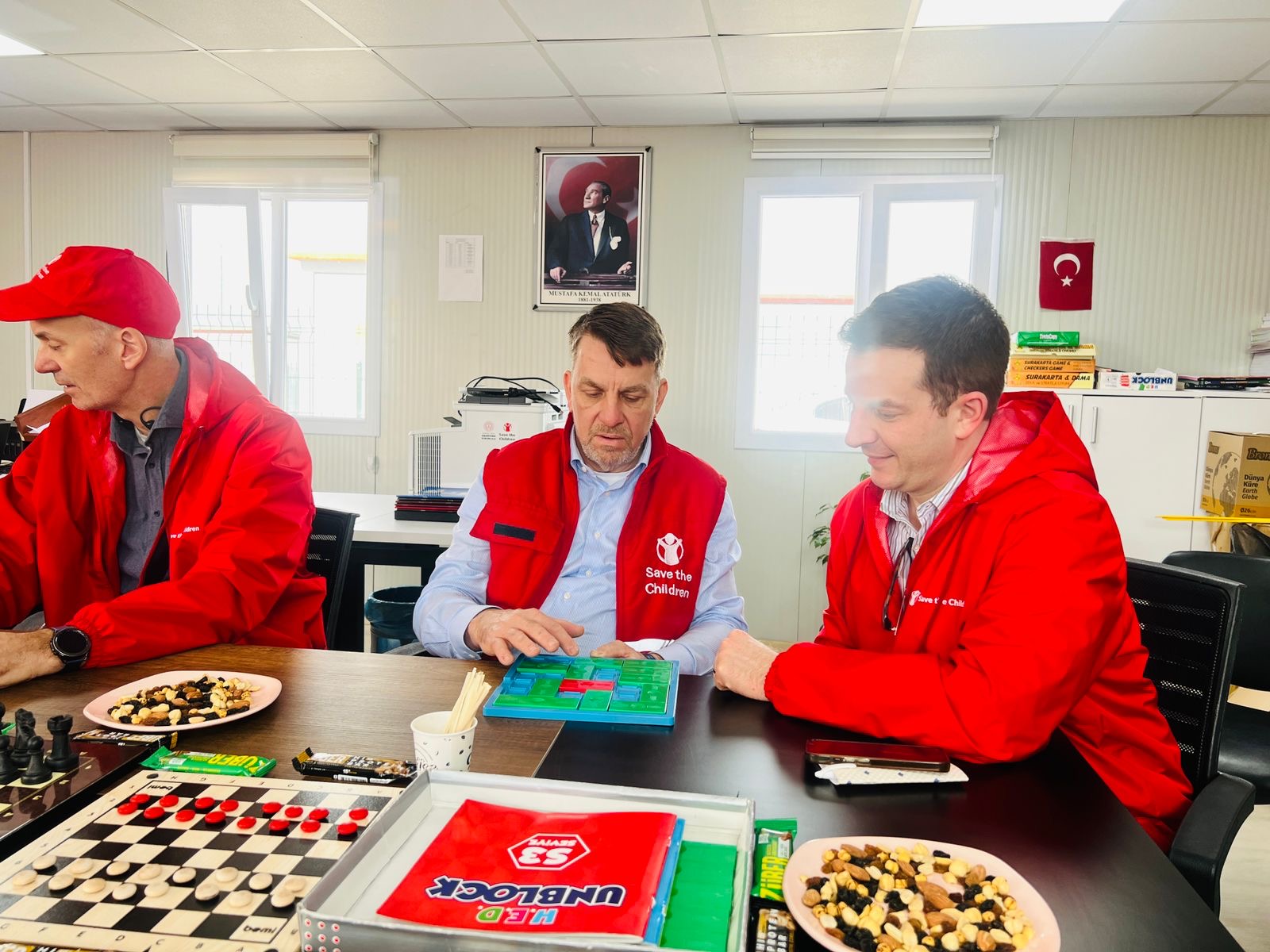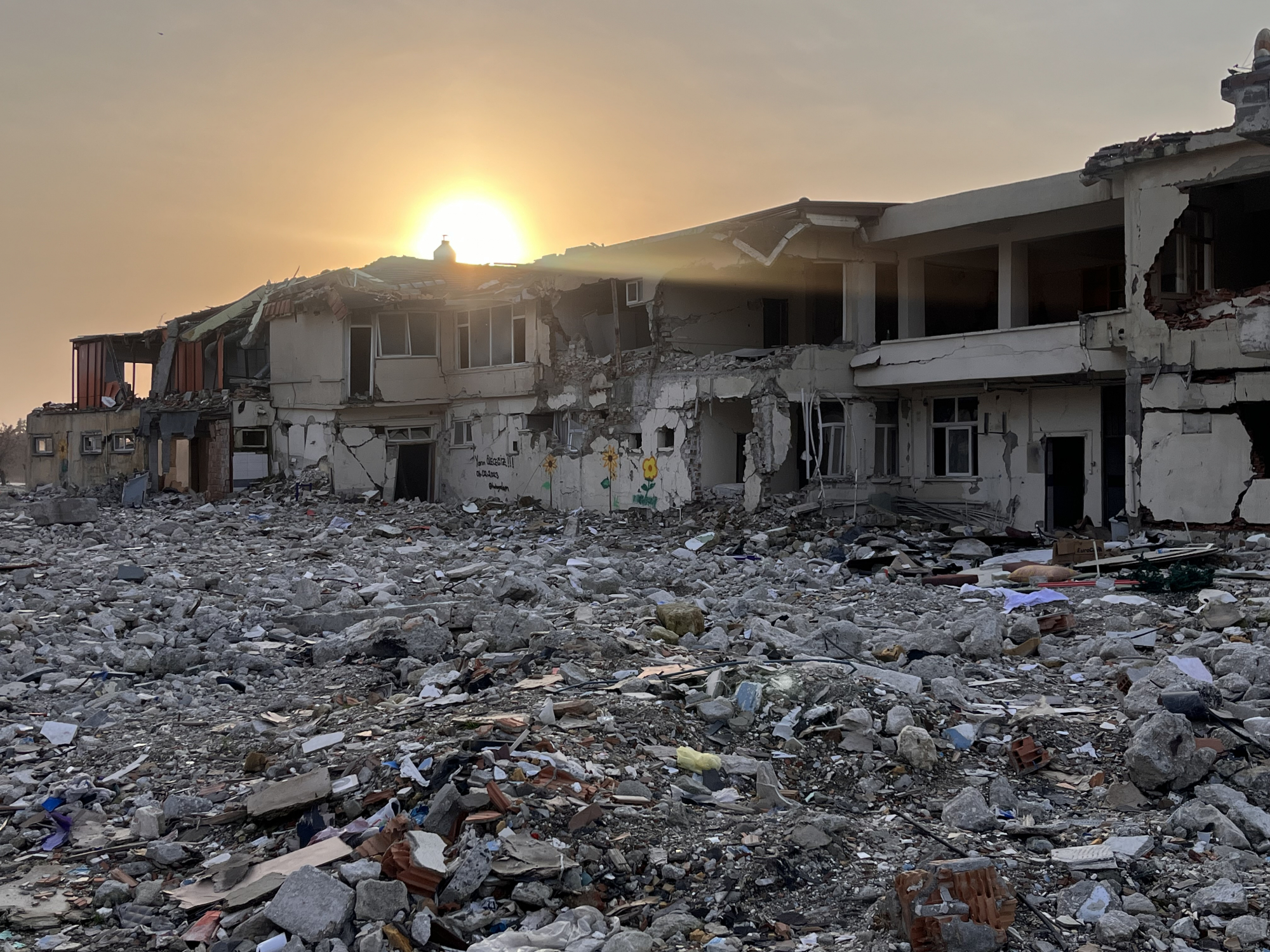Glimmers of Hope: Visiting Türkiye after the Earthquakes
Guest blog by Danny Glenwright, President and CEO, Save the Children
On February 6, 2023, a 7.8 magnitude earthquake struck southern and central Turkey and northern and western Syria, followed shortly afterwards by a second – 7.7 magnitude – earthquake. In addition to a high number of fatalities, about 2.4 million people were forced from their homes. As of February 2024, over 761,000 people – including 205,000 children – are yet to return home.
I recently visited Türkiye to learn more about the work that Save the Children Türkiye is doing in the region to support children and families impacted by the 2023 Türkiye-Syria earthquakes.
Day 1: Arrival in Gaziantep
[Sasha Ekanayake], Country Director for the Türkiye office, meets us at the airport and notes that it’s been a challenging year for his team. Many of them did not take any leave until this week, which represented the one-year mark since the first of two major earthquakes (and 120 aftershocks) devasted the region – affecting more than 24 million people and leaving 1.5 million people homeless in Türkiye.
It was among the world’s worst natural disasters this century, as well as the deadliest earthquake in Türkiye since 1939. The Türkiye office has about 300 staff and only five of them are expatriates. Many of them were personally affected by the quakes; they lost loved ones and had their homes and neighbourhoods damaged or destroyed.

Day 2:
We start with a briefing at the main office; Ali, one of Save the Children’s earthquake response managers, notes that the mushrooming container villages – which have popped up across four provinces affected by the earthquakes – are referred to as “temporary settlements,” not camps. The aim is eventually to build enough new homes for all those displaced over the last year.
The first quake struck at 4 am on February 6, 2023, and by noon that day, Save the Children had already mobilized $2 million from its humanitarian fund.
The team is now in phase three of the response – focused on shelter, support to children and their families, and water, sanitation and health.
That afternoon, we visit a camp in Nurdağı, which mostly houses Syrian refugees. Many Syrians were living in Türkiye after fleeing the conflict at home, and they had integrated with local communities. They now live in temporary settlements reserved for refugees.
This region is one of the most diverse in the country, with large communities of ethnic minorities, including Romani, Abdal, and Domari communities.
The air is damp, and the settlement is muddy and wet. It looks like a giant gravel parking lot that has been converted into a makeshift community. Most families stay inside their container homes due to the cold weather. I ask the manager of the settlement if these families can go home. “Have you been to Syria?” he asks.
Twisted piles of damaged and destroyed cars and trucks – hundreds, perhaps thousands – take up an entire field beside the settlement. These are some of the vehicles that the quakes destroyed. 90% of Nurdağı was damaged or destroyed and there are piles of rubble everywhere as we leave the first settlement. Heavy machinery punctuates the barren rubble-strewn landscape – powerful excavators used to demolish the half-toppled buildings that the quakes rendered inhabitable.

Save the Children has built container school rooms (like portable classrooms you’d find at schools in Canada), a playground and latrines for students here so that these kids can keep learning and playing.
Later in the day, we visit another container camp that houses Turkish people who lost their homes. Save the Children works here to support pre-school, grade school and adolescent children with rehabilitation and education programming as well as child-friendly spaces. Most children here have lost one or more family members or loved ones, so we’re working with community partners and educators to with a focus on mental health and psycho-social support.
We enter a classroom for adolescents and all the children stop what they’re doing and stare at our group of visitors, all sporting bright red Save the Children windbreakers. We were told that these kids lost most or all their family members to the quakes.
After an awkward silence, a young girl jumps up and shouts, “Hey, my name is Selma!” and the ice is officially broken.
We meet all the other children and then an instructor points to a poster on one wall that shows a drawing of an iceberg. The tip above the water has an arrow pointing to it and a word in Turkish that translated to “anger.” Everything below the water is outlined as sadness, fear, regret, disappointment. All common feelings for these youngsters.
Another poster asks, “What do you do when you’re angry?” The responses underneath it read “spending time with animals,” “walking in nature,” and “playing games on my phone.”
Structured learning that adapts a technique first used to support homeless kids in Belgium helps these kids learn, or re-learn, social skills that assist as they overcome the trauma of losing their loved ones. It also boosts their self-esteem, which was on full display as we played an educational game with the group of children.
Day 3:
On the third day we rise early so we can drive the three hours from Gaziantep to Hatay province, which was the area most devastated by the earthquakes. Some of our colleagues here still live in tents and containers, joining the more than 350,000 people in Hatay who have relocated into these temporary shelters.
Because of the soft ground here, most buildings collapsed or were badly damaged. Those buildings constructed higher up in the hills surrounding the city mostly still stand, looking down on the wasteland of what was once one of the oldest cities in the world, dating back to 300 BC.
30% of kids in Hatay are still not able to access education and child labour and early forced marriage are growing risks as families take up negative coping mechanisms to survive. “This city is really tough for children,” one of our staff says. “There is still much to do as we try and rebuild lives here for children.”

We visit a camp which was constructed by Save the Children and its partners. There, we see classrooms, child friendly spaces, games rooms, community meeting rooms, women-and-girl-only safe space rooms, and many other facilities built by Save the Children to support the needs of families who live in the 509 containers here. We’ve also built container gardens and playgrounds to improve the space. Families here know they will be here for some time.
As we leave the camp, we drive by miles upon miles of devastated communities in and around Antakya; fields of rubble and debris where homes and residential buildings once stood. Sometimes one or two buildings remain standing, like lonely buoys in a sea of wreckage.
As we drive through what remains of the most affected neighbourhoods, one of our local staff, Mohamed, points to a field of rubble. “That was my home,” he says. Nothing remains. Mohamed and his pregnant wife were sleeping in their fifth-floor apartment when the first quake hit. Their building collapsed, crushing the first two floors, and killing all his neighbours who lived there. He and his wife were rescued by a crane and hoist machine in the chaotic aftermath. They feel lucky to have survived. When their daughter was born, they named her Ilda, which means “girl warrior” in Turkish.
In the afternoon, we visit a container city constructed through donated containers from Qatar – re-used prefab structures that were first used to house athletes and guests attending the 2022 World Cup in Qatar. There are four camps made from these recycled homes and the settlement houses more than 4000 Domari people – historically nomadic peoples who live throughout this region.
We are invited into the home of one family: a mom, dad and their three children. They share this tiny one room space with Lemon, their pet budgie, who is flying around the room when we enter the container. Unlike Lemon, the family tells us they mostly stay inside their tiny space, because there is nothing to do in this container community and they feel it’s unsafe for the children to leave due to increasing concerns in the area about child trafficking. Unlike many, they have a kitchen and toilet in their container, and they are thankful for the child-friendly space that Save the Children runs in the community, where the kids play, draw and learn musical instruments.
As we leave the camp and the sun descends behind this field of container homes – row upon row as far as the eye can see – I strike up a conversation with Levant, another temporary member of the Save the Children team here. He rushed to Hatay after the earthquake, leaving behind a full-time job as a script writer for TV commercials. This was his sixth time supporting search, rescue and rehabilitation following an earthquake in this country, which sits on active fault lines. And he tells me this was the worst he’s ever seen, even worse than the Istanbul quake in 1999, which killed more than 18,000 people.

Much of this region is still devastated and struggling to recover. Dedicated Save the Children staff like Levant gave me hope that it will get there. For the past year, Save the Children’s dedicated staff here have been helping this community, their community, recover and rebuild. Thanks to your support, we were able to scale up our work immensely over the last 12 months to provide learning, nutrition, health and protection for the thousands of children of this wounded region.
A year after these life-altering tragedies, sadness and anger are still everywhere here, on the surface and – like the iceberg – just below it. But there are also many glimmers of hope and healing.


